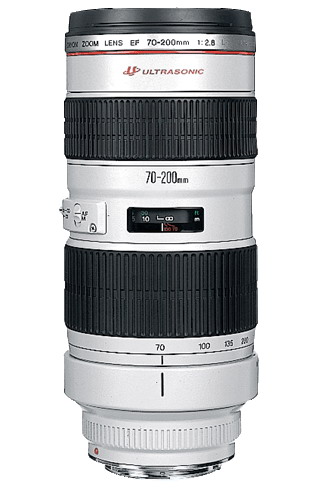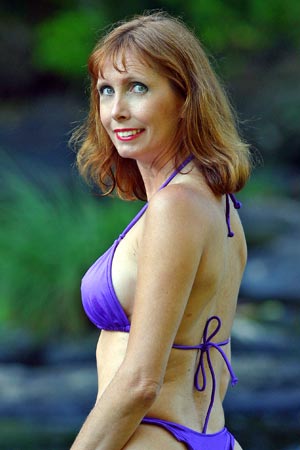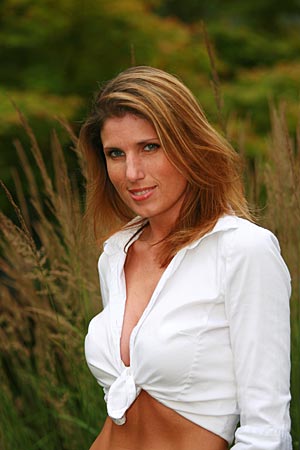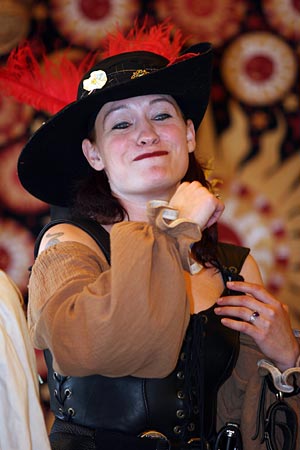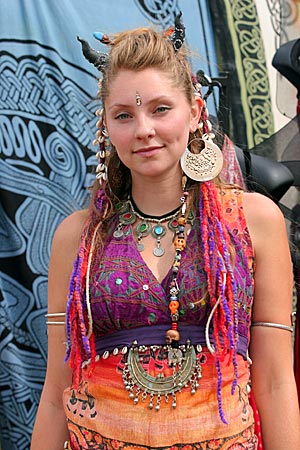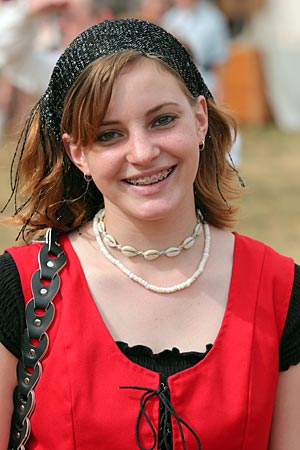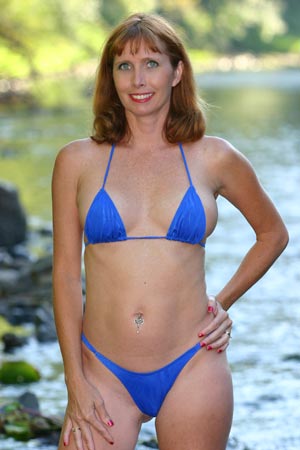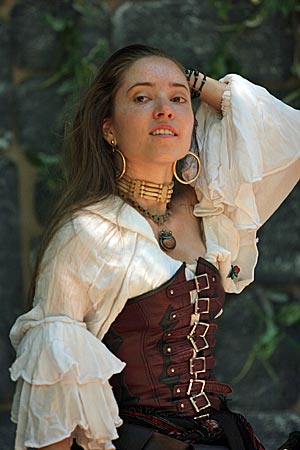Canon EF 70-200 f/2.8 L (non-IS)
Lens Review
This was my very first L lens and was one of my workhorse lenses
for over 7 years. I purchased this lens in June of 199 and it has
more than paid for itself in the intervening time. I purchased the lens based on the recommendations of Philip Greenspun in this article (since updated). I bought it primarily for a portraiture and glamour lens for my EOS 3 film camera, but when I moved to digital with the Canon D30 in December of 2000, this lens easily made the transition. I sold this lens in 2007 when I upgraded to the IS version.
Canon makes four (4) 70-200 L zooms. They are, in order of introduction, the 70-200 f/2.8 L (1995), the 70-200 f/4 L (1999), the 70-200 f/2.8 L IS (2001) and the 70-200 f/4 L IS (2006). By all reports the f/4 versions of this lens are smaller, lighter and just as sharp, if not sharper, but of course, lack the larger aperture and better low-light capabilities of the f/2.8 lens. My copy of this lens was certainly sharp, and the friend who has it now has no complaints. I loaned it to her for a few weeks to try out, and she kept calling me names (rat bastard was the one I remember best) because I gave her such a great lens to use and she knew she was just going to have to buy it.
The f/2.8 maximum aperture allows for a nicely shallow depth of field,
and the eight-bladed iris provides beautiful
out-of-focus areas (bokeh). This can be seen in the photograph directly
below. This is a great lens for outdoor glamour as it is sharp, fast and provides great contrast and wonderful color rendition. The vast majority of my outdoor and barefoot glamour shots have been made with this lens.
Portrait at 180 mm and f/3.5 on Canon 10D |
|
At almost 3 pounds (1310 grams) this is a pretty hefty lens. It's lighter than the IS version by about 0.3 pounds (the IS adds to the weight and size), and I've used it for quite a bit of faire
and festival photography with no issues with carrying it around for several hours at a time. These days, though, I more often use a 24-105 f/4
L IS for outdoor event shooting since that lens is lighter and shorter, and therefore easier to manage in crowds. If I needed to shoot a night event,
however, I would chose this lens over the 24-105 L.
The extra stop allows for a brighter viewfinder image and more accurate
focus when using a precision focus screen such as the Ee-S, Ec-S and
Ef-S.
The zoom and focus rings are smooth and well damped. The lens does not extend as you zoom or focus. The rings have nice rubberized gripping surfaces and are easy to use, even with gloves.
As expected of a Canon L lens, the build
quality is excellent. The lens uses Ring type USM auto focus which
allows Full Time Manual focus override. Minimum focusing distances
is 4.9 feet (1.5 meters ) and the lens utilizes an internal focusing
system with a non-rotating front element. This is great when shooting
with a circular polarizing filter . Unlike the IS version, this lens is not weather-sealed, but I have used it in light mist and snow with proper protection (a Storm Jacket or plastic bag) with no adverse issues.
The ET-83 II petal shaped hood fits snugly via a bayonet style mount and is flocked
on the interior to absorb light. The hood is made out of high impact
plastic and is very easy to mount. I reverse mount my hood on the
lens for easy storage. Filter size on this lens is 77mm making it
easy to share filters with the other L
zooms such as the 24-70 f/2.8 L,
the 24-105 f/4 L , and the 17-40 f/4 L.
Glamour at 105 mm and f/2.8 on Canon 1D MarkIIN |
|
The lens contains 18 elements in 15 groups which include four (4) Ultra Low Dispersion (UD) elements for excellent contrast and color rendition. Flare is well controlled and the deep hood provided with the lens provides excellent protection for the front element.
At 7.6 inches long with a 3.3 inch diameter white barrel, this lens is not exactly stealthy. It will make you stand out from the crowd. This might be good or bad depending on the circumstances. When shooting at Ren Faires and festivals, this lens got me lots of attention from the characters and players who were eager to show off for the camera, and it often got me into areas which were restricted to press only. If, however, you are trying to shoot street candids or don't want to advertise that you have expensive professional camera equipment, you may want to leave this lens behind.
Although first introduced in 1995, this lens is still manufactured and sold new. Current prices as of this writing are about $1150 from reputable online dealers and $1200 from local pro photo suppliers. Many people choose this lens over the f/2.8 version primarily for the lower cost (about $550 less), and perhaps for the lower weight, though it's only about 1/3 pound lighter.
Technical Details
for this Lens
Additional Images
|
|
Bonnie Strangelove (A Wycked Wench) |
Gorgeous Lady at the Washington Ren Faire |
|
|
Gabby at Shrewsbury |
Portrait of Lynda |
|
|
Wanda at the Stream |
Sexy Pirate Girl |
|
